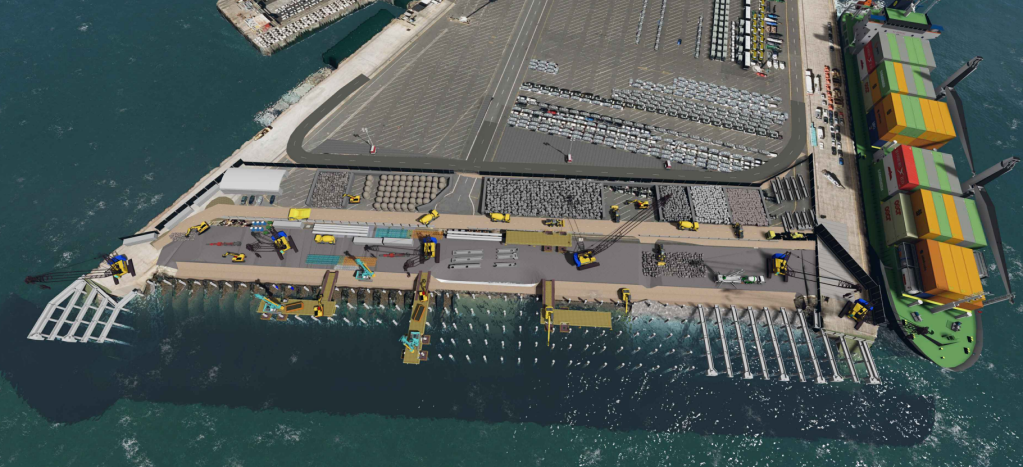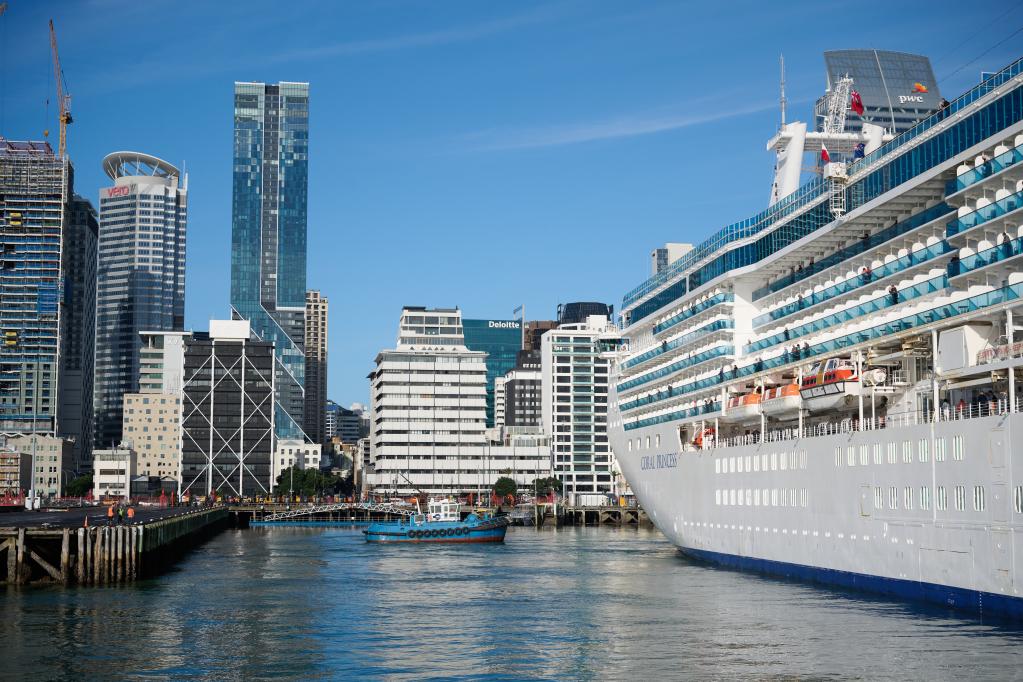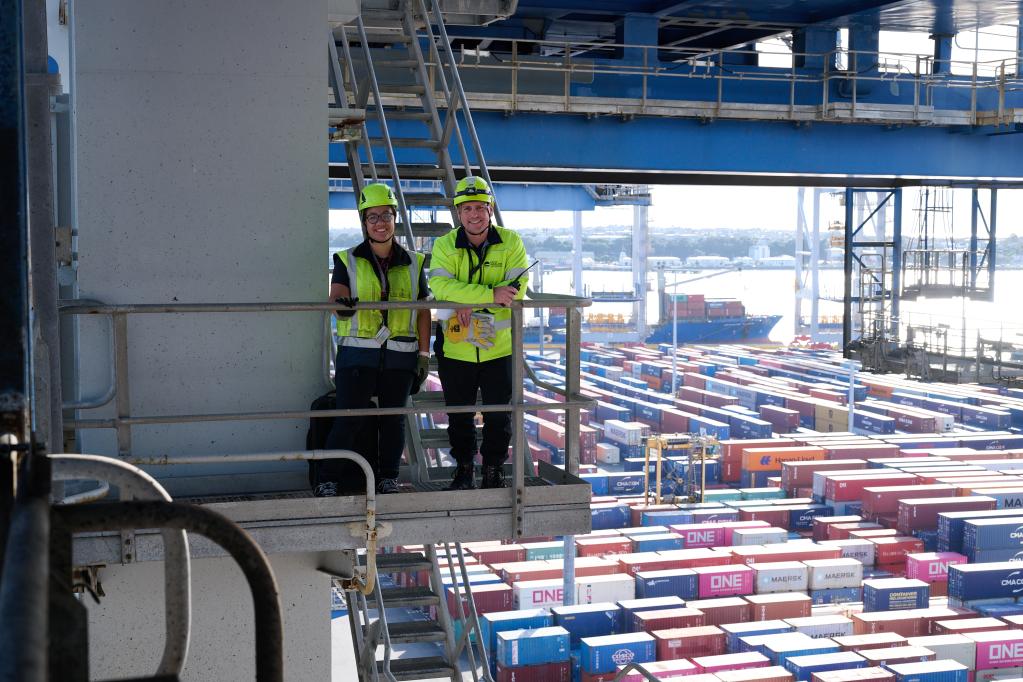Welcome to Ports of Auckland’s half year report to December 31, 2020
Financial performance
- Unaudited group revenue of $114.2m compared to $123.2m for the previous corresponding period (pcp).
- Unaudited net profit after tax of $13.6m compared to in $17.2m in the pcp.
- Container volumes down as a result of COVID-19-related congestion.
- Car and other general cargo volumes ahead of forecast but down compared to the pcp as a result of COVID-19-related issues.
For the six months ended 31 December 2020
| | GROUP | |
| | 31 December 2020 Unaudited $'000 | 31 December 2019 Unaudited $'000 |
| Revenue | 114,168 | 123,232 |
| Profit before income tax | 17,920 | 20,724 |
| Net Profit after tax | 13,602 | 17,179 |
Trading Performance
- Container volume (TEU) of 416,232, (475,173 in the pcp).
- Total general cargo volume of 3.153m tonnes (3.297m tonnes in the pcp).
- Car volume of 104,224 units (124,295 units in the pcp).
Ports of Auckland Chief Executive, Tony Gibson has today announced the company's half-year results.
"The first half of this financial year has been incredibly hard for the business, but we can now look forward with some optimism. That is not to say the second half won't be difficult – it will – but we have plans in place to resolve the issues that affected us in this period. We expect the current issues to be behind us in the second half of calendar 2021 and to be able to lift performance in FY 2022.
There has been one big issue that has loomed large over this six-month period: Global supply chain congestion as a result of COVID-19, which has had flow on effects to our container terminal automation project and delays to shipping through our container terminal.
Phase one of automation was meant to go-live in March 2020, but days before the go-live date the country went into Level 4 lockdown and work had to stop. The project is back up and working now with systems all running to plan. As soon as pavement remediation can be done, a full terminal roll-out will happen.
At the end of August there was an accident at the container terminal which resulted in the death of one of our colleagues. Safety is and has always been a top priority at the port. Several operational changes were made immediately after the accident and we have implemented a programme called 'strong foundations, safe people' to bring a greater intensity to improving safety. We know we must work collectively across the business to keep improving safety systems.
Across the month of September and into October, the events of the year combined to produce a perfect storm, reducing container terminal throughput and delaying shipping through Auckland.
With COVID lockdown, we put our people into 'work bubbles' to keep them safe – but this added complexity to our operations and reduced the number of effective work hours. Training time was lost and combined with strong competition from the construction industry we have struggled to maintain our talent pool. Crane drivers are a particular case.
Another impact of COVID is that normal supply chain patterns disappeared and have not come back.
Other global events have had an impact. Strikes at ports in Australia disrupted schedules and unexpectedly high volumes around the world meant that by August we were seeing more ships running off-schedule than normal. As New Zealand's largest import port and the first port of call for many services, the increase in import demand had a significant impact.
In the lead up to Christmas there was an unusual pattern of demand and a continuous flow of ships. In a normal year we have busy and quiet periods during the week and across the year, for which our rosters and staffing level are designed.
This year, with no quiet periods, there was no time in the week when days off didn't have an impact and staff were consistently working longer hours. In the interest of staff welfare, we changed the roster to reduce maximum work hours and improve days off with a consequent impact on productivity.
The nature of the job we face at the terminal has changed, so we are adapting. While we've been able to hire enough new people for the lower skilled roles and have a good training pipeline for straddle drivers, finding and/or training crane drivers has been difficult. For the first time ever, we have looked overseas to recruit.
Customers up and down the supply chain have had a tough time so it is good, therefore, to report some positive progress.
In December we recruited two skilled crane drivers from New Zealand which allowed us to form an additional crane crew. We searched worldwide for crane operators with the right skills for our port and a willingness to move to New Zealand and found enough to create a circuit breaker so we can work through the backlog and get ships back on their Auckland timetable.
Automation is progressing well. Over 70 ships have now been through the automated yard with over 40,000 containers handled. We are looking forward to turning it fully on across the whole terminal later in 2021.
While COVID has presented some big challenges, the multi-cargo operations team and the third-party stevedores who work the ships in this part of the port have done an outstanding job.
Trade to the Pacific Islands has continued unabated; cement volumes remain strong and other bulk imports like grains and gypsum have continued steadily. Car volumes have bounced back from a fall in the first six months of calendar 2020 and the newly completed car handling building has been well used, demonstrating its value to the motor vehicle supply chain.
Thanks to COVID it is pretty much impossible to forecast at present. However, our increased recruitment and training, will result in a larger container terminal workforce and ensure we are ready for anticipated increased container demand. It will also ensure we are geared up long-term to handle any spikes in demand and throughput.
Other projects will also come to fruition this year. Towards the end of 2021 we are due to take delivery of our electric tug, Sparky, the world's first electric ship-handling tug. We have also installed a hydrogen refueller, which is part of our roadmap toward a zero-emission future.
Financially, the year has been better than forecast but down on the previous corresponding period (pcp). Container volumes were down due to the capacity constraints at the terminal but volumes through the multi-cargo wharves were ahead of forecast. Revenue, expenses and profit were all down on the pcp. Profit (before income tax) was $17.9 million for the period, compared to $20.7 million in the pcp.
We would like to thank all our staff and management for the work they have been doing over this very difficult period. The COVID year, with its different ways of working, lockdowns, home schooling and more has been very difficult for everyone in New Zealand, and our people are no exception. We really appreciate the hard work that has gone in to keeping the port working as well as it has."
The 2020 interim report is available here
ENDS
For further information contact:
Matt Ball
GM PR & Communications
M: +64 21 495 645
E: [email protected]


